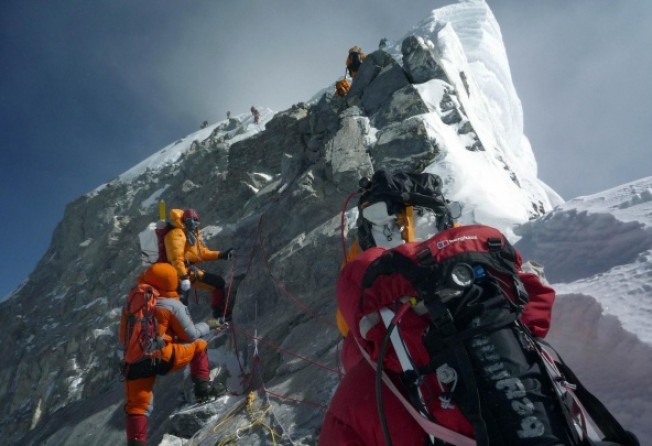
Plan for safety ladder on Everest's 'Hillary Step' gains support
Sherpas to install the safety feature to ease risky congestion near the world's highest summit

It was the final obstacle, 12 metres of technical climbing up a near-vertical rock face which pushed Sir Edmund Hillary to the limit. Once climbed, the way to the summit of Mount Everest lay open.

"We are now discussing putting a ladder on the Hillary Step but it is obviously controversial," said Dawa Steven Sherpa, who runs commercial expeditions on Everest and is a senior member of the Expedition Operators Association in Nepal.
This year 520 climbers have reached the summit of Everest. On 19 May, around 150 climbed the last 900m of the peak from Camp IV within hours of each other, causing lengthy delays as mountaineers queued to descend or ascend harder sections.
"Most of the traffic jams are at the Hillary Step because only one person can go up or down. If you have people waiting two, three or even four hours that means lots of exposure [to risk]. To make the climbing easier, that would be wrong. But this is a safety feature," said Sherpa, who co-ordinates the work to prepare the traditional route up the mountain for clients.
The plan has received some support from the world's mountaineering authorities. Frits Vrijlandt, the president of the International Mountaineering and Climbing Federation, said the ladder could be a solution to the growing numbers of climbers on the mountain. "It's for the way down, so it won't change the climb," Vrijlandt said.
After the climb, Hillary described his concern at seeing the steep cliff so high on the mountain during the first ascent. He managed to climb it using a crack to one side.
Tenzing Norgay followed and the pair continued to the summit.
There are also plans to introduce more rigorous traffic controls on the so-called fixed ropes, which run almost from base camp to the summit and are fixed by specialist sherpas.
One rope for climbers on the way up and one for those descending are to be installed. But though such innovations are anathema to many purist climbers, they are welcomed by some sherpas.
Paid around US$7,000 for guiding a client to the summit, the sherpas, almost all from local villages, are regular casualties on the mountain.